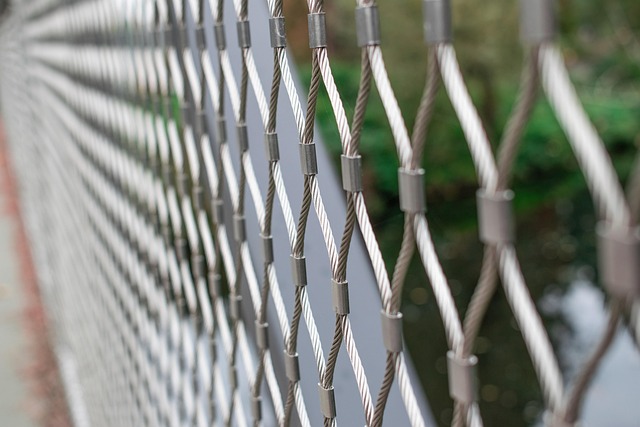In New Bedford, proper fence maintenance is an investment that enhances property value and ensures secure outdoor spaces. This article guides homeowners through the intricacies of common fence issues peculiar to the region and highlights the advantages of professional repair services. We explore durable materials essential for long-lasting fences and provide a comprehensive step-by-step installation guide. By understanding these aspects, New Bedford residents can effectively manage their fencing needs, ensuring both functionality and aesthetic appeal.
- Understanding Common Fence Issues in New Bedford
- The Benefits of Professional Fence Repair Services
- Choosing the Right Materials for Long-Lasting Fences
- Step-by-Step Guide to Efficient Fence Installation
Understanding Common Fence Issues in New Bedford
Fences in New Bedford, like anywhere, are exposed to various elements and face numerous challenges. Common issues include rot due to high moisture levels, especially in older wooden fences, and damage from storms or harsh winters. Fence posts often settle unevenly, leading to inclines that can compromise structural integrity. Additionally, pest infestations, such as termites, can significantly weaken fence components if left undetected. Lack of regular maintenance is a significant contributor to these problems. Homeowners often underestimate the importance of timely repairs and inspections, which can lead to costly replacements down the line.
Regular checks for signs of damage or decay are crucial in preventing major issues. Homeowners should look out for cracks, gaps, or loose panels, addressing them promptly to avoid further complications. Understanding these common problems is the first step in ensuring your fence remains in top condition, enhancing the security and aesthetic appeal of your property in New Bedford.
The Benefits of Professional Fence Repair Services
When considering fence repair or installation, opting for professional services offers numerous advantages. Expert fence contractors possess the necessary skills and equipment to handle various tasks efficiently. They can assess your unique needs and provide tailored solutions, ensuring long-lasting results. Professional services also guarantee high-quality workmanship, protecting your investment with robust and secure installations.
Moreover, these professionals can offer a wide array of styles, materials, and designs, enhancing the curb appeal of your property. Their expertise in local regulations and safety standards ensures compliance, avoiding potential fines or legal issues. With professional fence repair, you benefit from peace of mind, knowing your fence is in capable hands, and will stand the test of time.
Choosing the Right Materials for Long-Lasting Fences
When it comes to fence repair or installation, selecting the right materials is half the battle won. The durability and longevity of a fence depend significantly on the choice of material. Wood, for instance, requires regular treatment to prevent rot and pest damage but offers a classic aesthetic appeal. Vinyl fences are low-maintenance, resistant to rotting, and come in various styles, making them a popular choice. On the other hand, chain link fences provide maximum security and are ideal for areas requiring visibility.
Consider factors like climate, traffic, and intended use when picking materials. In coastal areas, corrosion-resistant options like stainless steel or aluminum may be more suitable due to salt air exposure. High-traffic areas might demand materials that can withstand impact without damage. Always opt for high-quality products from reputable suppliers to ensure your fence not only looks good but also stands the test of time.
Step-by-Step Guide to Efficient Fence Installation
When installing a new fence, proper planning and execution are key to a durable and aesthetically pleasing result. Here’s a step-by-step guide to help you through the process:
1. Measure and Plan: Start by assessing your property lines and deciding on the type of fence that best suits your needs and preferences. Measure the perimeter carefully, taking note of any obstructions like trees or hedges that may affect the installation. Create a detailed plan including the size, style, material, and location of the fence.
2. Obtain Necessary Permits: Before breaking ground, check with your local authorities to ensure you have all the required permits for installing a fence. This step is crucial and varies depending on your area’s regulations.
3. Prepare the Ground: Clear the intended fence line of any debris, vegetation, or structures. Mark out the perimeter using string or flags to ensure accuracy during digging. Dig post holes at the marked locations, making sure they are deep enough to support the fence posts securely.
